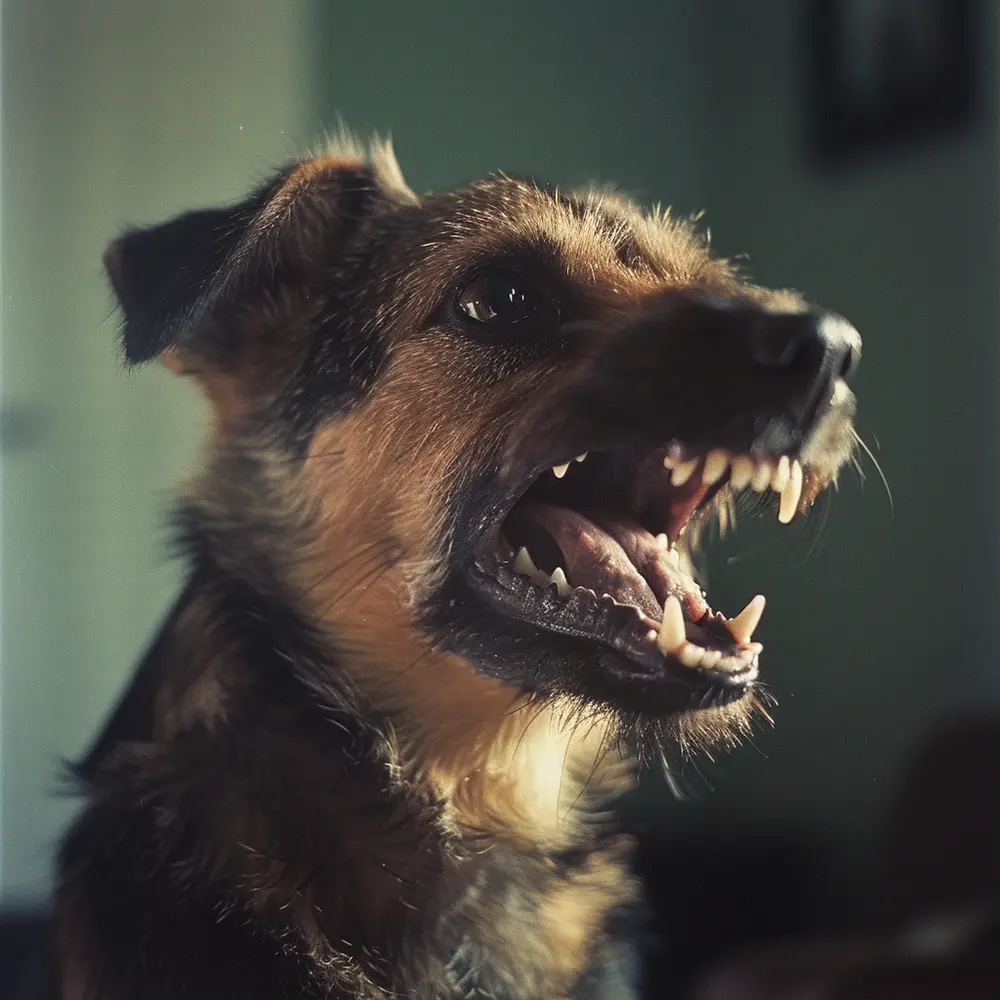Table of Contents:
Understanding Positive Interruption in Canine Behaviour Management
When it comes to shaping the behaviour of our dogs, the concept of interrupting behaviour is a critical one. It is a strategy of gently but effectively redirecting our dogs when they're engaged in less-than-desirable actions. To use this approach, it's crucial to grasp the fundamentals of positive interruption and how it enhances canine behaviour management.
Interruption in this context means to interfere with an ongoing behaviour without causing distress or fear. Positive interruption techniques allow us to manage a situation by tactfully stopping our dogs before they continue with an unwanted behaviour. This creates a window of opportunity where we can then guide them towards more favourable actions. By doing so, we reinforce desired behaviours rather than punishing the unwanted ones.
Why opt for positivity? It is simple. Dogs learn better in an environment where they feel safe and supported. Employing positive interruption techniques nurtures an environment of trust, helps keep stress levels low, and promotes a positive learning space. This not only helps in the immediate moment to stop unwanted behaviours but also serves as a foundational stone in building a resilient, respectful, and enduring bond between dog and owner.
Implementing positive interruption strategies isn't just about saying 'no'. It involves a considered combination of verbal cues, environmental changes, and the use of positive reinforcements like treats and toys. Moreover, timing is essential. The interruption must occur as the unwanted behaviour unfolds to ensure clear communication and effective learning.
The Importance of Positive Techniques in Interrupting Behaviour
The correct application of positive techniques when interrupting behaviour is not just beneficial, but essential in guiding our dogs towards making better choices. The application of such techniques supports a dog's psychological well-being. Instead of inducing fear or confusion, which can arise from harsh correction methods, positive interventions foster a sense of security and understanding within our dogs.
Utilising gentle signs to divert a dog's attention from unwanted activities is a subtle yet profound method to influence their behaviour choices positively. This approach encourages problem-solving skills and adaptability, which are valuable traits for any dog. Our four-legged companions become more adept at reading situations and making decisions that align with their training.
Additionally, positive interruption methods significantly reduce the risk of behavioural issues that stem from anxiety and stress. This proactive strategy ensures that the dog's focus is shifted in a way that does not escalate their emotional arousal. By maintaining a calm and controlled environment, we pave the way for desirable behaviour patterns to solidify and become second nature.
In sum, the use of positive techniques when interrupting behaviour is pivotal. It contributes to a healthy learning environment, where dogs are given the chance to thrive and excel without intimidation. The result is a happy, well-adjusted dog capable of navigating the world with confidence and poise.
How to Effectively Use Positive Interruptions with Your Dog
To use positive interruptions effectively with your dog, you'll want to focus on timing and consistency. Interrupting the unwanted behaviour as it happens is crucial. The goal is to catch your dog's attention in the act without delay, halt the behaviour and immediately redirect them.
Begin by choosing a specific sign that is distinct and not part of your usual signals. This signal should be a sound or word that is easy for your dog to recognise and associate with the need to pay attention to you. It must be neutral, without carrying a positive or negative connotation, allowing it to serve purely as a means of redirection.
- Verbal Interruptions: Use a calm and steady voice to issue a short word, like 'oops' or 'watch', to attract your dog's attention away from the behaviour.
- Visual or Auditory Cues: A gentle clapping of hands or a soft whistle can serve as a simple but effective non-verbal interruption cue.
- Physical Interruptions: Redirect your dog by leading them gently on a leash to a different area, or by engaging in a separate, more desirable activity.
Once you have successfully redirected your dog's attention, it's critical to reward them for the shift in focus. Positive reinforcement—like offering a treat, verbal praise, or affection—reinforces the desirable behaviour and encourages them to repeat it in the future instead of the unwanted action.
Practising positive interruptions requires patience. With time and consistent reinforcement, your dog will begin to favour the encouraged behaviour over the previous unwanted one. Always remember: the objective is not to startle or scare your dog but to guide their learning in a supportive and understanding manner.
Redirecting Your Dog's Attention: Practical Tips and Tricks
Mastering the art of redirecting your dog's attention requires a mix of creativity and practicality. The essence lies in offering your dog a more appealing choice than the unwanted behaviour they're engaged in. Here are some effective tips and tricks:
- Engage Their Senses: Captivate your dog by introducing a new toy or treat with a strong scent or interesting texture. This can quickly lure their focus away from distractions.
- Create a Trail: Lead your dog to better behaviour by laying down a trail of treats that moves them away from the area where the unwanted action is occurring.
- Master the Swap: If your dog is chewing something they shouldn't, offer them an acceptable alternative, like a chew toy, and praise them when they take it.
- Incorporate Training Games: Use short, fun training games that require concentration, such as 'touch training' where your dog must touch their nose to your hand for a reward.
- Change the Scene: Sometimes a simple change of environment can reset your dog’s mindset. If they are fixated on something inside, a quick trip to the garden can provide a welcome distraction.
It's essential that the redirection is seamless and immediate to prevent your dog from getting mixed signals. The goal is to make the transition so smooth that your dog barely notices they've been redirected but still ends up engaging in a more desirable activity.
The key to successful redirection is understanding what your dog values in the moment and offering something equal or more enticing. With regular practice, your dog will learn that paying attention to you means fun and rewards, making them more likely to look to you for cues in the future.
Avoiding Common Mistakes in Behaviour Interruption Strategies
While employing behaviour interruption strategies, it's just as important to know what not to do. Being aware of common mistakes can prevent setbacks in your dog's training and ensure a positive experience for both of you. Here's what to watch out for:
- Over-Reliance on Interruptions: While useful, interruptions are only a temporary "fix" and so a management strategy only affecting the symptoms but not the source of a behaviour. It is essential to pair them with the teaching of alternative, acceptable behaviours.
- Lack of follow-through: After interrupting the behaviour, there needs to be immediate guidance towards a preferred action. Not doing so can leave your dog confused about what is expected.
- Inconsistent Signs: Using different signs for the same interruption can befuddle your dog. Stick to one distinct sign to ensure clarity and reliability.
- Negative Associations: Avoid signs that could become associated with negativity or punishment, as these can erode trust and make your dog wary of training.
- Delayed Responses: Timing is everything. Late interruptions can miss the mark, failing to prevent the reinforcement of the unwanted behaviour.
- Chaining: A mistake to avoid is inadvertently teaching your dog a sequence where they perform an unwanted behaviour, are interrupted, and then perform a wanted behaviour for a reward. This can create a pattern where the dog learns to engage in the unwanted behaviour as a precursor to receiving instructions for the desired action. To prevent this, it is crucial to differentiate between interrupting an unwanted behaviour and rewarding an alternative behaviour without making them sequentially dependent on one another.
Successful behaviour management through interruption relies on a balanced approach that considers your dog's emotional state and learning abilities. Be patient, be consistent, and always couple interruptions with positive reinforcement to guide your dog toward making the right choices independently. This will not only support your dog's learning but also reinforce your bond.
Case Studies: Success Stories of Positive Behaviour Interruption
Real-world examples shine a light on how positive behaviour interruption strategies can transform a dog's actions and improve their overall conduct. These success stories showcase the practical application of the methods discussed and their impact on both dogs and owners.
"Milo, a spirited Beagle, had a habit of digging up the garden. His owners began using a whistle as a positive interrupter. Each time he began to dig, they would blow the whistle and redirect his attention to a sandbox designed for digging. With consistent practice, Milo's digging became a thing of the past."
"Layla, a rescue dog, struggled with jumping on visitors. Her trainers implemented a positive interruption using a special mat where she would receive treats for sitting calmly. Soon, Layla began going to her mat instead of jumping, greeting guests politely without being prompted."
These cases illustrate the effectiveness of a well-executed positive interruption strategy. By focusing on redirecting and reinforcing desired behaviours, dogs can leave their unwanted habits behind. With time, patience, and a touch of creativity, positive interruption leads to lasting behavioural changes and a happier coexistence with humans.
Reinforcing Good Behaviour: Beyond the Interruption
Effective training extends far beyond the moment of interrupting behaviour. The true essence of positive reinforcement lies in acknowledging and reinforcing good behaviour consistently. This approach encourages your dog to repeat those good actions in the absence of any interruption cues.
Recognition of this good behaviour should be immediate and enthusiastic. Whether it is a treat, verbal praise, or physical affection, it is vital that your dog knows exactly which action has earned them a reward. This clarity helps your dog understand the positive outcomes of their new behaviour, making them more inclined to adopt it as part of their routine.
- Set Clear Expectations: Clearly demonstrate the behaviour you wish to see, so your dog has a goal to strive for.
- Consistent Reinforcement: Use a consistent reward system to help your dog make a strong connection between their behaviour and the positive outcome.
- Gradual Reduction of Signs: As your dog becomes more consistent, gradually reduce the use of interruption cues, allowing natural good behaviour to take over.
By making good behaviour more rewarding and fulfilling for your dog, you help them understand the value of these actions. Training becomes not just a series of commands to follow but a way of life that they choose because it leads to positive experiences and a loving connection with their owner.
Building a Stronger Bond Through Positive Interruption Methods
One of the most rewarding outcomes of using positive interruption methods is the stronger bond that develops between you and your dog. By engaging in respectful and constructive training techniques, trust is built and the partnership between human and canine is deepened.
Positive interruption methods are based on mutual understanding and communication. When a dog knows that their human companion will guide them with kindness, they are more likely to respond with eagerness and attention. This solid foundation allows for a relationship that thrives on cooperation rather than coercion.
Every interaction with your dog is an opportunity to reinforce this bond. When interruption is needed, keeping a cheerful tone and body language ensures your dog perceives the interaction as a positive one. Likewise, following up with affectionate praise or playtime after correct behaviour conveys love and approval, further cementing the emotional connection.
Ultimately, a bond strengthened by positive methods stands the test of time and creates a joyful, harmonious living situation. It encourages your dog to look to you for cues, confident in the knowledge that they are safe and valued, leading to a more responsive and contented pet.
Conclusion: The Lasting Impact of Positive Interruption on Dog Behaviour
The techniques of positive interruption offer far more than immediate corrective measures; they lay the groundwork for long-term behavioural transformation. By incorporating these methods into your training routine, you can foster an environment of learning that is both stress-free and enjoyable for your dog.
The lasting influence of positive interruption is visible in the way dogs begin to self-regulate their behaviour, anticipating the outcomes they’ve been taught to value. These procedures are not merely about stopping undesirable actions but also about instilling a mindset where good behaviour is naturally preferred and rewarded.
Remember, every dog has their own pace of learning, and consistency is key. Celebrate the small milestones along the way, and understand that patience will lead to the progress you desire. With the commitment to positive interruption and reinforcement methods, the result is a well-mannered dog that is also a joy to be around.
In conclusion, the strategy of interrupting behaviour in a positive way is an essential component of modern dog training. It aligns well with the understanding of how dogs learn and perpetuates an enriching bond between dogs and humans. Embrace these techniques, and watch as your dog’s behaviour changes for the better, leading to a happier life together.
FAQ on Managing Unwanted Dog Behaviour Through Positive Interruptions
What are positive interruptions in dog training?
Positive interruptions are techniques used in dog training to gently redirect a dog's unwanted behaviour without causing distress. These methods create an opportunity to steer the dog towards desired behaviours, reinforcing good actions rather than punishing negative ones.
Why are positive interruptions important in behaviour management?
Positive interruptions are crucial as they halt unwanted behaviours in a way that maintains trust between the dog and the professional. They foster a safe and supportive learning environment, reduce anxiety, and promote adaptability, which is more conducive to long-term behavioural change.
How can I implement positive interruptions with my dog?
Implement positive interruptions by using specific verbal cues, environmental changes, or offering acceptable alternatives like toys or treats. Ensure that the interruption occurs as the unwanted behaviour unfolds and follow up with immediate reinforcement for the desired behaviour.
Can positive interruptions help with any type of unwanted behaviour?
Positive interruptions are versatile and can be applied to a range of unwanted behaviours. However, effectiveness may vary depending on the behaviour's complexity, the dog’s individual personality and history, as well as the owner's consistency in applying these methods.
What are some common mistakes to avoid when using positive interruptions?
Common mistakes include over-reliance on interruptions, inconsistent cues, negative associations, and delayed responses. Avoid these by ensuring consistent application, clear and distinct cues, maintaining a positive tone, and providing immediate follow-through with guidance towards a preferred action.








